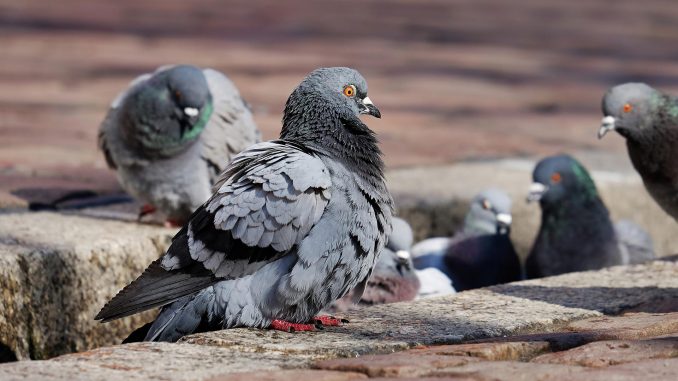
Four peregrine eggs have hatched in an artificial nesting box suspended from the 12th floor of the Great Hassan II Mosque, marking the success of efforts to allow this iconic raptor species to nest on the site of this spiritual landmark in Casablanca to combat the proliferation of pigeons through a nature-based solution, says the Moroccan Association for the Protection of Raptors (AMPR).
At the origin of this project, a collaboration between the AMPR and the company Perliagro (Society of pest control) who have put their efforts together to find a solution based on nature to reduce the nuisance and negative impacts related to the proliferation of pigeons in the perimeter of the site, adds the same source.
The person in charge of health and safety at the Hassan II Mosque Foundation had indeed asked Perliagro to assist them in reducing the pigeon population, using ethical methods based on the natural regulation of the bird’s population. The idea of using one of the largest natural predators of pigeons seemed to be the right one.
The first step of this project, which is a first in Morocco and in the Arab World, was to set up, on October 27, 2019, a nesting box specially prepared to attract individuals of Peregrine Falcons that had already been observed sporadically in the area, explains the same source, adding that this initiative was done with the permission and partnership of the regional directorate of waters and forests in Casablanca, which was also involved in monitoring the operations.
The nesting box was installed on the 12th floor of the mosque and oriented towards the East to benefit from the first rays of morning sun while remaining sheltered from the prevailing winds.
Less than two months later, a pair of peregrines began to timidly frequent the vicinity of the nesting box. With the installation of a camera at the nesting box and based on the positive indicators that were recorded during the two years of the project, AMPR was able to follow the live hatching of four peregrine eggs during the first week of April 2022.
In addition to generating a natural pressure that contributes to keeping pigeons away from their nesting site (the Hassan II Mosque), these birds of prey will consume between 600 and 800 of them each year. Their presence will also allow us to study the ecology of this emblematic and protected species in the urban environment. To this end, a GPS tag installation (provided by IUCN under the Program for Small Civil Society Organizations in North Africa – PPIOSCAN) on the small falcons is planned by AMPR on May 10, under the direction of the National Agency for Water and Forests (ANEF) and the Conservator of the Great Mosque Hassan II, in order to document their first flights and monitor their movements, says the same source.
Note that the Peregrine Falcon is a Moroccan heritage species that has long been used in falconry. This predatory bird of prey is also considered as the fastest species in the Animal Kingdom as it can reach up to 320km/h in its spectacular swooping descents.

Be the first to comment